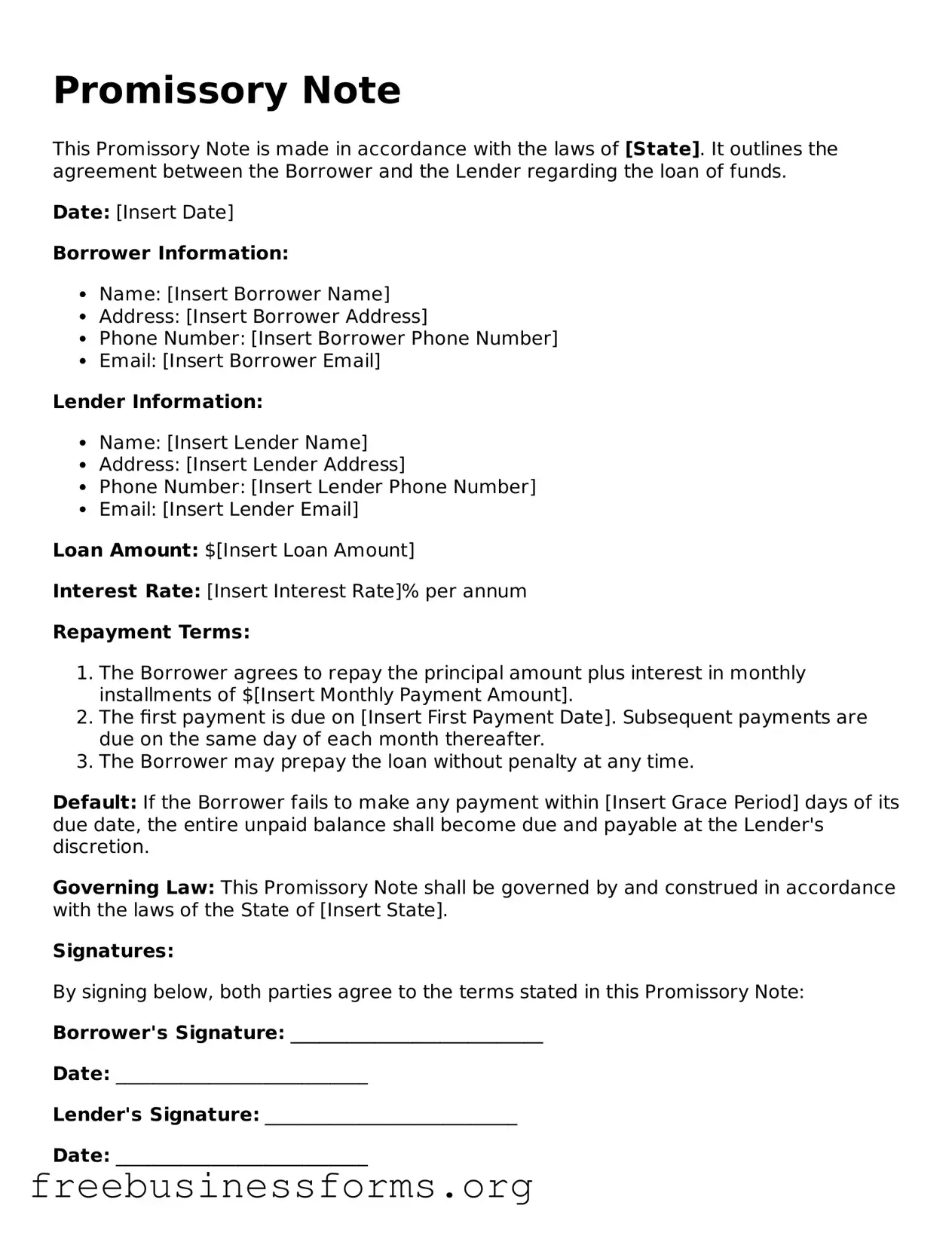When it comes to financial transactions, a Promissory Note serves as a critical tool that outlines the terms of a loan agreement between a borrower and a lender. This legally binding document details the amount borrowed, the interest rate, and the repayment schedule, ensuring that both parties have a clear understanding of their obligations. In addition to these essential elements, the Promissory Note also specifies the consequences of default, providing a layer of security for the lender. It can be customized to include provisions such as prepayment options and collateral requirements, making it a versatile instrument for various lending scenarios. By formalizing the agreement in writing, the Promissory Note helps to prevent misunderstandings and disputes, fostering trust between the parties involved. Given the importance of this document in both personal and commercial lending, understanding its structure and implications is vital for anyone engaged in borrowing or lending money.
